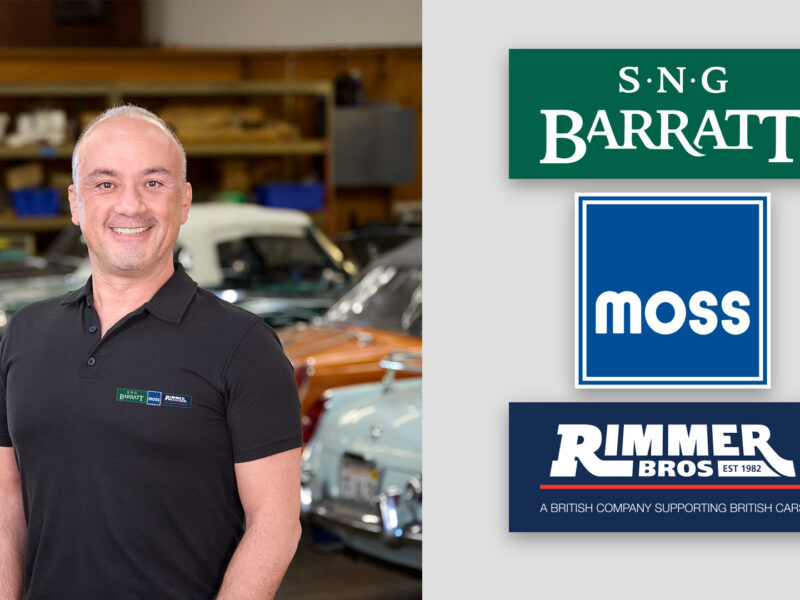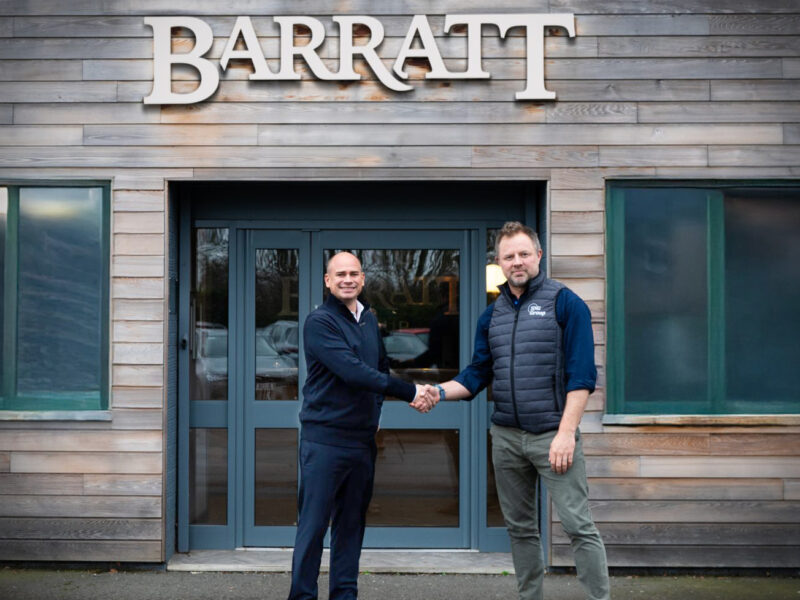Healey Adventure
I’ve owned my 1963 Austin Healey BJ7 for 20 years. After retiring, my wife Pat and I have driven the car from coast to coast and border to border. Our greatest adventure was in 2000, when we shipped our car to England along with other Healey enthusiasts and spent three weeks driving through Scotland, Wales, and England (including visiting Perranporth, Cornwall, the home of the late Donald Healey). In 2002 we attended the 50 Year Healey Anniversary Open Roads International Conclave at Lake Tahoe. After Conclave we headed for Napa Valley, California, up the Pacific Coast to Victoria, B.C., and then across Southern Canada to Sauté Ste. Marie and home to Georgia, covering over 7,600 miles.
In 2003 following Conclave in Tyson’s Corner, Virginia, we drove from Southern Ontario to Nova Scotia and back to Atlanta. This year, we drove to Conclave in San Antonio, Texas, followed by a post-Conclave tour through south and west Texas before returning home. By the way, our car took first in class at the last two conclaves.
We also own a 1971 MGB. Thanks to Moss Motors, it’s nearly complete.
—Louis Ballard
Congratuations on using your car the way Donald Healey intended.
TR “Value Guide” Kudos
As someone who currently owns his third TR3 and has driven TRs off and on since 1966, I read with great interest Rick Feibusch’s “TR Value Guide” article. Rick hit the nail on the head when he mentioned problems with overheating in traffic. The cooling system problems were engineered into the vehicle and were only made worse with the introduction of the TR3A. The original TR2/TR3 featured a small-mouth grille that actually acted as a shroud to force 100% of the air to pass through the vehicle’s radiator. With the introduction of the TR3A, this concept was discarded for style and not for “better cooling.”
Making matters worse, the action of the windmill-style fan is of little help to force air through the radiator, especially when the engine compartment is already filled with air that has passed around the radiator. Proof of this can be seen in the modification sold by Moss to shroud the airflow back into the radiator per the original design.
In England, there’s little worry about overheating. Perhaps that’s why a good deal of engineering went into providing a bypass that routes coolant around (instead of through) the radiator. The OE thermostat was an elaborate device with a shell that, when fully opened, would restrict the coolant from bypassing the radiator. At any other time, coolant can bypass the radiator. This part is no longer available, and using a standard thermostat without modification to the plumbing is not effective to keep the engine cool.
Two other factors that affect temperature are fuel mixture and quality. Proper mixture affects the running temperature, and higher-grade gasoline actually burns cooler, not hotter. The good news is that we now know how to eliminate all of these faults. The TRA group has a flier that details the simple modifications required for the plumbing and also the type of fan to use. After making these changes, my 1958 Triumph handled heavy Orlando, Florida, traffic in July without getting anywhere near the boil-over point.
These fans, which existed during TR2 production, are much more efficient than the electric fan modification and do not draw valuable power away from the already-inadequate charging system.
The article’s assessment of vehicle value seems very fair and reflects the asking price of three fine examples shown in that issue’s classifieds. Not that I’m complaining, but perhaps it’s the availability of good parts and services from companies like Moss that has prevented the British car from becoming more valuable.
—Rich Wagner
XJS Fan
I was very interested, and even encouraged, to read the article on the Jaguar XJS. I have owned, and driven daily, an XJS-C (cabriolet) for 16 years—the longest I have ever owned any car, by far. This car is comfortable, fast, and the best long-distance drive you could wish for. On California Highway 99, a test for any car with its concrete surface and expansion strips, it rides far better than the 1999 XJ8-VP I owned until recently.
What has always intrigued me is the complete disdain with which the XJS-C is treated by Jaguar “purists” and even Sports Car Market, which hops right over the “S” to the “K” in its valuation lists. Another fact: Go to any car meet and you can buy a miniature of the most obscure model imaginable. But just try to find an XJS—you won’t.
I enjoy the magazine, Moss’s informative catalogs, and the annual Moss-sponsored events such as the Buttonwillow British Extravaganza. I am getting close to completing a ground-up restoration of an Elva Courier to vintage-racing standard, and Moss has been a great help.
—Jack Bennett
XJS V-6 Disrespect
As the owner of a Jaguar XJS, I was pleased to see this car featured in the Summer 2004 issue. The article was informative and fact-filled but unfairly dismissed the 6-cylinder models.
Despite John Rettie’s assertion that the 6-cylinder models “do not provide the same svelte character that’s bestowed by the 12-cylinder engine,” it is worth emphasizing that the 6-cylinder models are less expensive to maintain and repair (as noted by Rettie), and yet they provide very similar performance to that of the 12-cylinder-equipped cars.
For example, for 1994 (the year of my 6-cylinder XJS), the 12-cylinder engine produced a claimed 278 horsepower versus 219 for the 6-cylinder engine. While the difference is considerable, it is not overwhelming, considering that the 12-cylinder-equipped cars weighed more than the 6-cylinder cars (326 more pounds in convertible form and 248 additional pounds in the coupe).
Additionally, these cars are hardly “sportscars” in the traditional sense, and so a few tenths of a second difference in 0-60 mph times is perhaps not an important yardstick for such cars. Heavy (at 3,805-4,306 pounds) and lacking even a manual transmission option for the 12-cylinder model (at least by 1994), the XJS is best appreciated as a luxury touring car, not as a “sportscar.”
It is also worth noting that the 12-cylinder models were virtually phased out in the later years of XJS production, whereas the 6-cylinder cars became relatively more plentiful. The market was, apparently, voting more in favor of the 6-cylinder models as time went on.
Perhaps some will still favor the 12-cylinder despite the weight penalty and the significantly increased maintenance and repair costs, but the 6-cylinder models offer very good performance at less cost, and they should perhaps be appreciated for these practical and important benefits–as apparently an increasing number of XJS buyers did when the cars were new. By the way, the photography by Scott Dahlquist was very nice.
—Reid Trummel
The photography was actually the impetus for the XJS story. Further, we specifically asked John Rettie to devote more space to the V-12s simply because of the “American more-better” caché attached to cars that have more than eight cylinders.
Waxing Poetic
My husband, who has restored his ’72 MGB with a lot of parts and inspiration from Moss Motors, will use any maneuver to bring the topic of conversation around to this little red car. No problem now—with the great tie our son-in-law found for him. Here’s a photo and poem I wrote, inspired by his devotion to this car. See this grin: It’s the same one he gets every time he gets behind the wheel of his roadster.
—Deborah Mann
Accessorize
William is proud of his new tie—
The British flag—and this is why:
He’ll wear it in his MG Car.
He’ll wear it here, he’ll wear it “thar.”
He’ll wear it through the summer days
With the top down to catch some rays.
And if the winter snow should fly,
He’ll wear longjohns, hat, scarf AND tie.
Yes, William’s proud of his new tie—
The Union Jack—and this is why:
It goes well with English roadster.
He eats, sleeps, and breathes MG, sir.
MGTC Production
The Winter 2004 issue was just grand. However, I am curious about the MGTC production count on page 13 of 23,456 in 1947. Let me know if this is correct or a misprint.
—Fred H. Renner
Oops, our pudgy paws hit too many keys and we didn’t catch the error before the magazine printed. According to Anders Ditlev Clausager’s book Original MG T Series, 1947 MGTC production was 2,346 based on figures sourced from the Production Control Department of the Abingdon factory.
Chrome Bumper Feedback
I enjoyed the MGB Chrome Bumper Conversion article in the Summer ’04 issue. I thought people might like to see the conversion I performed on my ’79. I elected to not install a grille, which gives a Cobra-like appearance. Also, I think it looks cleaner without bumper guards. I haven’t installed the chrome-bumper parking lights yet, so I’m temporarily using the ’79 lights. (The proper holes are behind the ’79 parking lights.) I did all of the work myself, including straightening a bent front valance and making a template for my ’70 parking lights. As you can see, there’s the chrome-bumper look, the rubber-bumper look, and the personalized look. (I’d like to use the Moss kit for my other ’79.)
—William M. Larson













'Reader Letters: Winter 2005' has no comments
Be the first to comment this post!